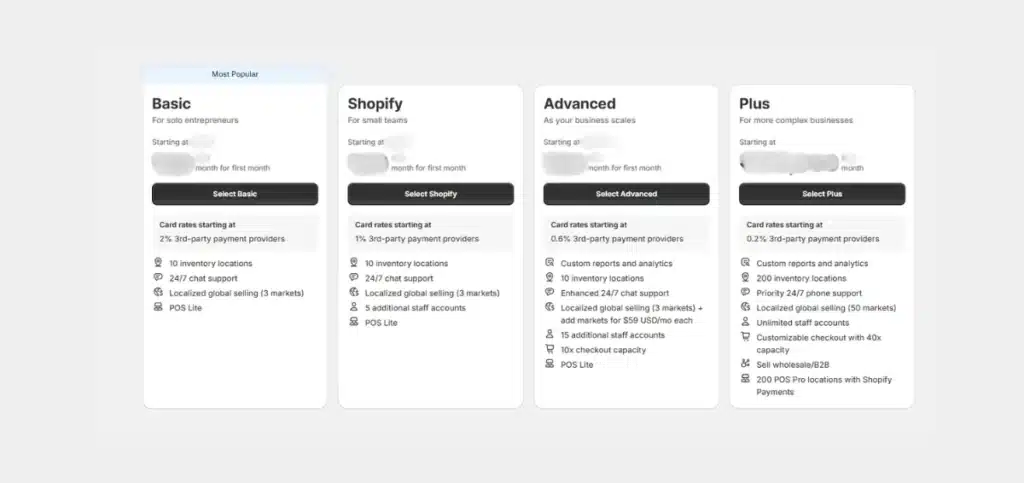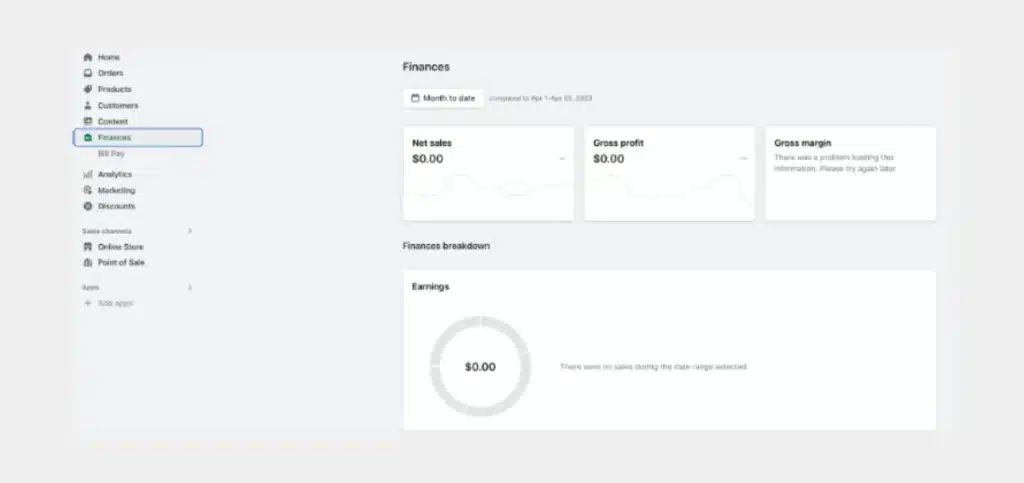Remember that moment when you seriously searched for information on ‘How to sell on Shopify’? Let me guess: you probably stumbled upon an amazing product and you just had to let the world know. And maybe earn well in the process!
But how do you start? Shopify is a favorite for countless entrepreneurs for all the right reasons—intuitive design, global reach, and endless possibilities. Whether you’re new to selling online or experienced and keen to scale your operations, this platform makes it easy to build a professional online store and connect with customers worldwide.
Today, I’ll share everything you need to know about e-commerce on Shopify and best practices to make your store a
What Is Shopify?
Shopify is a user-friendly platform designed to help businesses set up and manage their online stores. If you’re wondering why it’s so popular, the credit goes to its wide range of features, including web hosting, payment processing, and customizable design templates. The best thing about Shopify is that you don’t need to be tech-savvy to set up or manage a Shopify store—anyone can create a professional-looking storefront on Shopify.
Who Should Sell on Shopify?
Whether you’re a small business owner, an artist selling creations, or a large enterprise, selling on Shopify works for everyone. Cool, right?
It allows entrepreneurs to quickly launch their products. Experienced brands can grow their business with the benefits of advanced Shopify marketing strategies. Want to get started from home? Explore dropshipping on Shopify. Eager to turn your creativity into dollars? You must definitely check out new trends like print-on-demand with Shopify.
In short, Shopify is a versatile solution, no matter what stage of e-commerce you’re in.
Not sure if Shopify is the right fit for your business? Get in touch with our Shopify expert for a quick discussion.
Advantages and Disadvantages of Selling on Shopify
Advantages
- Easy to set up: Getting started with selling on Shopify is straightforward. Thanks to its intuitive design, you can launch your store in no time, even if you’re new to e-commerce.
- Customizable themes: Shopify offers a vast selection of pre-designed themes, so you can find one that matches your brand’s identity. You can also tweak layouts for a unique look and feel.
- No selling fees: Shopify does not charge per transaction. This is good news for entrepreneurs since they can maximize profits while maintaining transparent pricing.
- 24/7 support: You can run into technical issues when you least expect it. Or you might have questions just when starting out. Worry not! Because Shopify offers 24/7 assistance to keep your store running smoothly.
- User-friendly interface: Shopify’s dashboard makes managing your store stress-free. From inventory tracking to Shopify product listing, everything is streamlined for ease of use, ensuring an enjoyable experience for sellers.
- Extensive integrations and apps: Shopify’s App Store includes tools for accounting, marketing, shipping, and more. These apps help scale your business while simplifying tasks with plug-and-play ease.
- You enjoy full control: With Shopify, you can independently manage everything from pricing to promotions. That’s a better choice any day than sticking to the rigid guidelines of other e-commerce platforms.
Disadvantages
- Costs may increase with add-ons: Shopify’s base plans are affordable. Agreed. But remember that some advanced tools and features require paid apps. Such extras can raise expenses for sellers.
- Limited native features compared to specialized platforms: While versatile, Shopify doesn’t include niche capabilities out of the box. Sellers with specific needs may need third-party solutions or custom integrations to achieve their goals.
- Dependence on apps for advanced functionality: While apps expand capabilities, overreliance can lead to increased costs and complexity. Managing multiple subscriptions can also make your eCommerce operations harder to streamline.
- No custom email: Shopify doesn’t include branded email addresses, such as name@yourstore.com. This means you’ll need a separate service to maintain professional communication with customers and partners.
Need clarity on Shopify’s features? Speak with our expert today for the reliable Shopify support you deserve!
What is Required to Sell on Shopify?
To start selling on Shopify, you need a few essentials. Here’s a quick checklist:
- Begin with a product to sell.
- You need an interesting and easy-to-remember domain name for your store.
- A payment gateway is a must-have for transactions. You can either leverage Shopify payments or integrate third-party solutions like Stripe, Paypal, etc.
- Research your audience thoroughly to understand their needs and tailor your offerings.
- Branding matters too—create a memorable logo and cohesive visuals.
Don’t worry. Shopify simplifies all this for you with its built-in tools for branding, customer insights, and hassle-free Shopify payment processing.
Ready to get started? Our Shopify experts can help you start off on the right note! Call us now!
How to Choose Products for Shopify?
Now, this is perhaps the hardest part about setting up an online store. Start by identifying trending, in-demand items that align with the preferences of your target audience. Do your research—identify what’s trending in online marketplaces, social media, and competitor stores. Always, and I repeat always, prioritize quality. Once you have finalized products, find reliable suppliers. This will help ensure customer satisfaction and repeat purchases.
Don’t overlook your niche! Selling unique or specialized products helps you stand out in the competitive world of eCommerce on Shopify. Take time to analyze profit margins and consider products with minimal shipping costs, especially if you’re just starting out.
How Much Does It Cost to Sell on Shopify?

Shopify offers four pricing plans:
1. Basic: Priced at $29 per month and billed annually, this plan designed for solo entrepreneurs offers basic features such as 24/7 chat support, 10 inventory locations, and up to 77% shipping discount.
2. Shopify: This plan comes at $79 per month and is ideal for small teams. It provides five additional staff accounts, localized global selling, and shipping discounts of up to 88%.
3. Advanced: Choosing this plan will cost you $299 per month. It offers benefits such as 15 additional staff accounts, 10x checkout capacity, and custom reports and analytics that you may need while scaling your business.
4. Plus: Built for complex businesses, this plan offers the best of features at $2300 per month. In addition to 200 inventory locations and unlimited staff accounts, you also receive priority 24/7 phone support and customizable checkout.
Remember to check the latest pricing details since the pricing of these plans is subject to change. Additional costs may include transaction fees, premium Shopify themes and customization, and third-party apps.
Need help with choosing the right plan? Our Shopify specialist can evaluate your business size, the features you’ll need, and your budget to choose the perfect plan.
How to Sell on Shopify for Free?
Want to start selling products online from home on a budget? Use Shopify’s 14-day free trial.
This trial period lets you set up a store, test features, and even begin listing products. Stick to free tools like Shopify’s basic themes and opt for low-cost products, such as digital goods, which eliminate shipping costs.
Invest strategically and scale later when your sales grow—it’s a smart way to launch your store without breaking the bank.
Make the most of your free trial with help from our Shopify agency!
Step-by-Step Guide to Selling on Shopify for Beginners
Step 1: Find the Right Niche
If you want to stand out and truly connect with your audience, the first thing you need is a niche. Think of it as your store’s unique personality! Start by checking out what others in your industry are doing—what are they missing? Tools like Google Trends or some good old keyword research can help you spot those golden opportunities where demand meets less competition.
Step 2: Get to Know Your Audience
Who are your dream customers? What do they really need or want? Take a moment to imagine them—or better yet, ask them! You can run surveys, scroll through competitor reviews, or just pay attention to what people are saying online. Once you’ve got a clear picture, create a detailed customer persona (think of it as a profile for your ideal shopper) and match your products to what they’ll love.
Step 3: Pick Your Products
Now for the fun part—deciding what to sell! Start by digging into market trends and paying attention to what people are buzzing about. Still unsure? You can test out ideas by running polls on social media or chatting with potential customers in focus groups. Once you have a few solid ideas, crunch the numbers—how much will it cost you to source or make these products? What’s the potential price? And most importantly, will people buy it?
Step 4: Create Your Shopify Account

Alright, time to take the plunge! Head over to Shopify’s website and click “Start Free Trial.” It’s super easy—just pop in your email, set up a password, and add a few details about your business. Shopify’s setup wizard is like having a personal guide to walk you through the process.
Step 5: Choose Your Domain Name
Here’s a quick tip: your domain name is like your store’s street address online, so make it catchy and easy to remember. Shopify lets you buy a domain directly from them or connect one you already own—it’s hassle-free either way. Your custom domain is an easy way to give your brand that professional edge.
Step 6: Set Up Payments and Finalize Your Account

Before you’re open for business, you’ll need to make sure your store can accept payments. Shopify gives you plenty of options, like credit cards, PayPal, and more. Just pick what works best for you! Don’t forget to set up two-factor authentication for your account—it’s like locking your shop door to keep everything safe and secure.
Step 7: Register for Sales Tax Collection

Stay compliant with local tax laws by setting up sales tax collection in Shopify. You can use Shopify’s built-in tools to automatically calculate taxes based on your customers’ locations. Check your region’s specific requirements, as rules may vary.
Step 8: Shipping Settings

Shopify makes it simple to configure shipping zones, rates, and delivery methods. Consider offering free shipping on orders above a certain amount to encourage larger purchases. Additionally, integrate Shopify’s shipping discounts with carriers to save on costs and offer competitive rates to your customers.
Step 9: Start Designing Your Store
Choose a Shopify theme that matches your brand’s personality. Customize layouts, colors, and fonts to create a unique shopping experience. Keep navigation simple, so customers can easily find what they’re looking for.
Step 10: Adding Products to Your Shopify Store

Upload product details such as titles, descriptions, images, and pricing. Ensure the information is clear and compelling to attract buyers. High-quality images showcasing different angles of your products can make a significant impact. Add tags and categories to improve product discoverability.
Step 11: Fulfilling Orders
Shopify’s dashboard simplifies order fulfillment. You can easily track incoming orders, update inventory levels, and print shipping labels all in one place. Automated order updates keep customers informed and create a delightful buying experience so that they return for more.
Step 12: Use Shopify Apps to Grow Your Business
Did you know you can expand your store’s capabilities with Shopify apps? Try adding marketing tools for email campaigns, customer service chatbots, or analytics dashboards to understand buyer behavior.
Step 13: Advertise Your Online Store
Now, it’s time to attract traffic through social media ads, email marketing, and targeted Google campaigns. Create engaging posts to showcase your products and build a loyal following. Paid advertising on platforms like Facebook or Instagram can help increase visibility quickly.
Step 14: Keep Monitoring

Track your store’s performance with Shopify’s analytics tools. Monitor sales, traffic sources, and customer behavior to refine your strategies. Then, use this data to identify strengths and areas for improvement, ensuring consistent growth over time.
Want expert insights? Our Shopify analytics services can analyze your store for growth opportunities!
Best Practices for Selling Online on Shopify
Selling successfully on Shopify requires strategy and consistent effort. Here are key practices to boost your store’s performance:
- Create a professional brand: A polished brand builds trust. Use impressive visuals, easily identifiable logos, and attractive product images to reflect your identity.
- Optimize for mobile: Remember that around 65% of users now shop through mobile devices. Tap into this potential by creating a mobile-friendly store that loads quickly and is easy to navigate.
- Keep content fresh: You obviously need to keep everything fresh and exciting for your users. Add listings of new products, including interesting blog posts, and announce special offers to keep visitors coming back.
- Leverage Shopify SEO optimization: Use relevant keywords in product titles and descriptions to improve your store’s visibility on search engines.
- Provide excellent customer service: Quick, helpful responses can turn first-time buyers into loyal customers.
When you prioritize these best practices, you create a seamless shopping experience that boosts sales and customer retention.
Enhance your store with our professional Shopify support services!
Take Your First Step with Shopify Today
Launching a Shopify store is straightforward and rewarding, especially with its user-friendly interface and advanced features. With the right strategies and tools, you can create a thriving business. Don’t wait—this is your time to shine in e-commerce.
Ready to start selling on Shopify? Contact us to guide you every step of the way!






